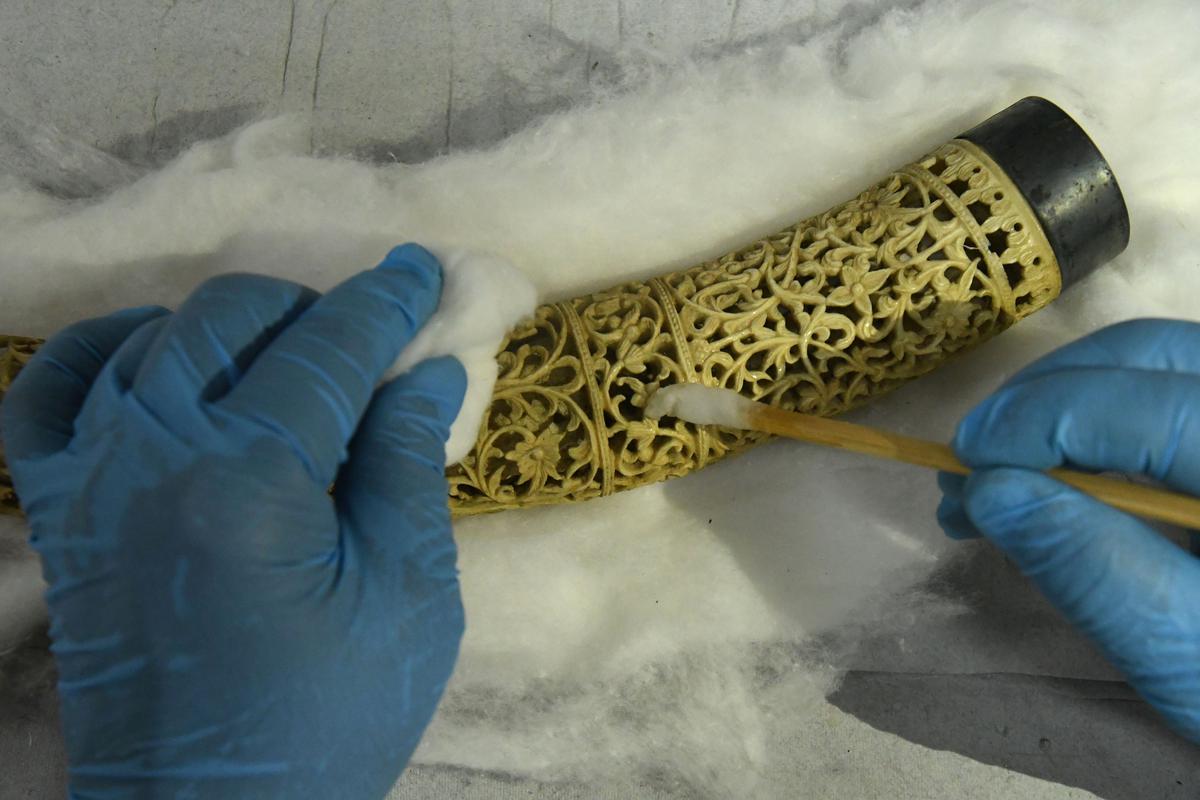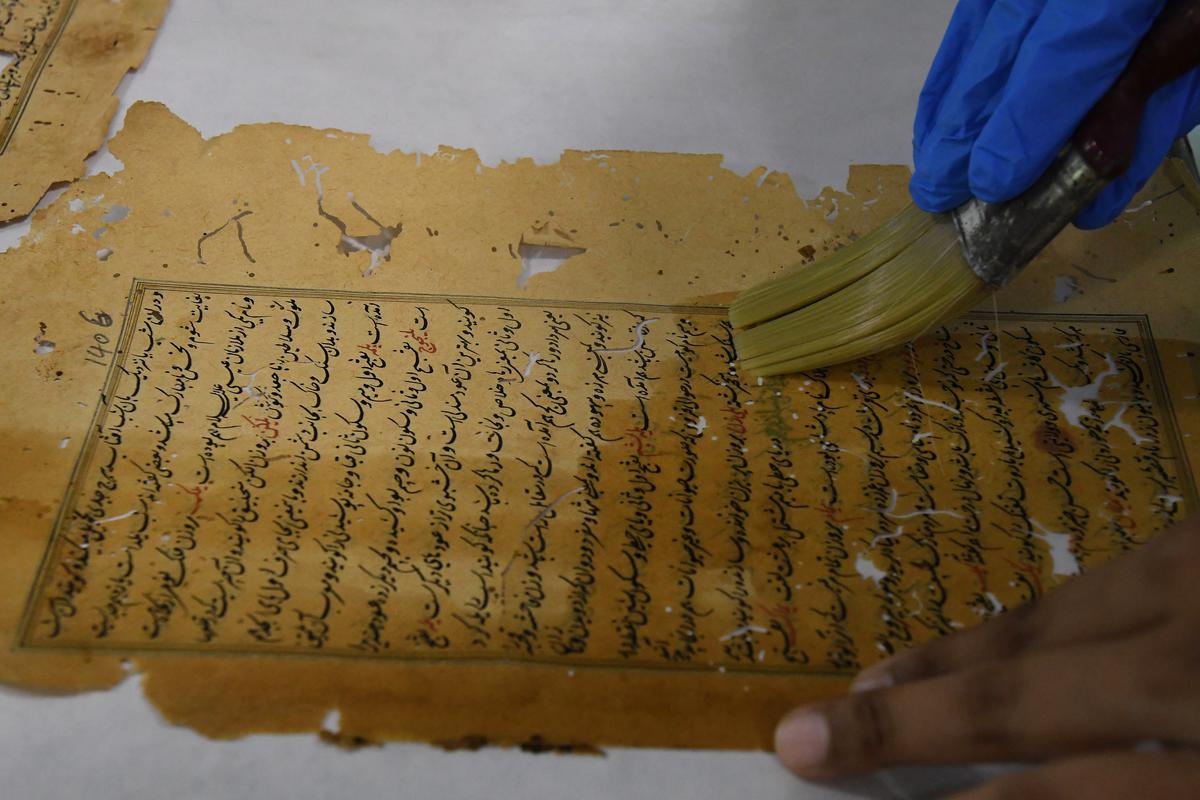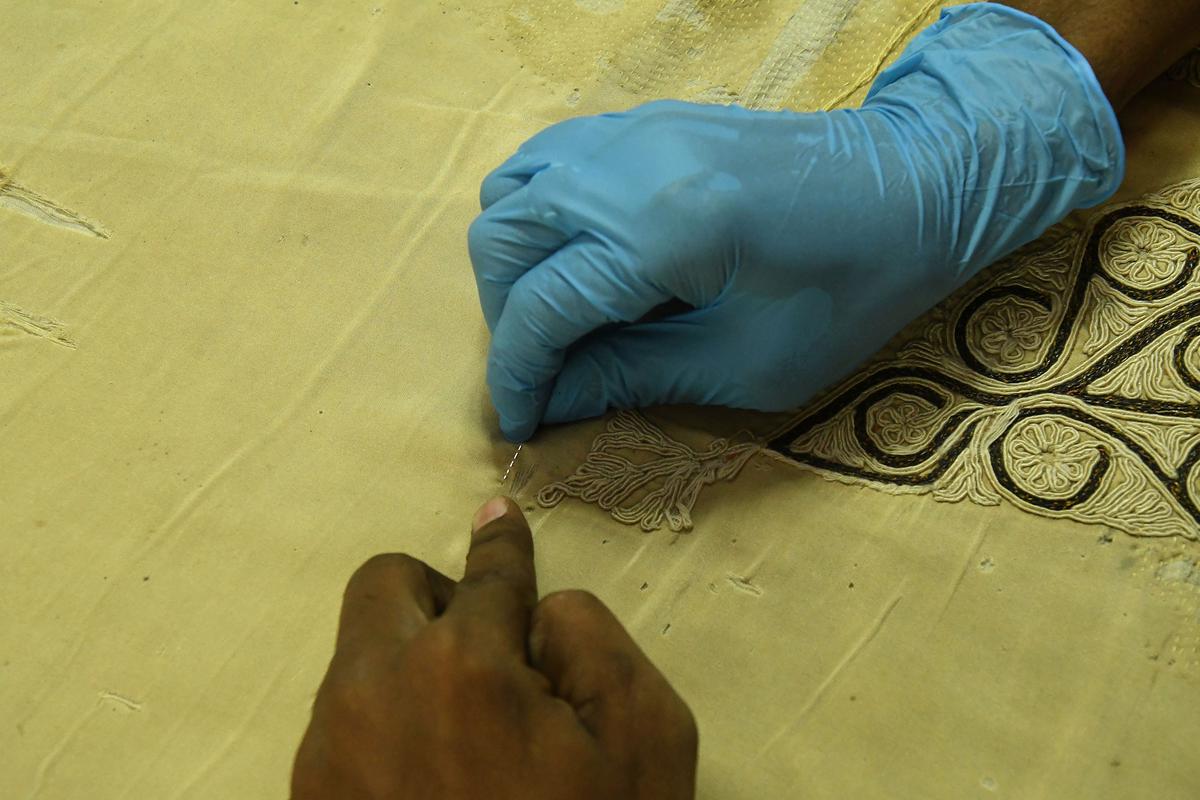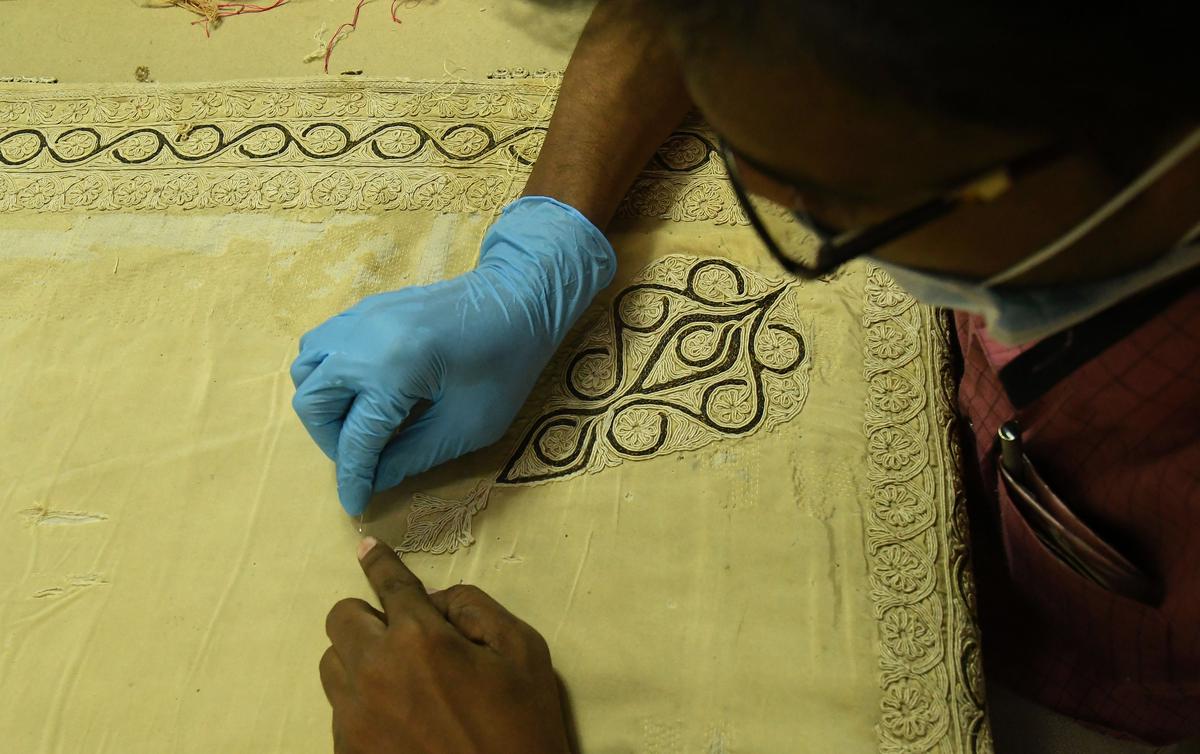Salar Jung Museum in Hyderabad strives to conserve and restore artefacts

The Manuscript conservation team at work
| Photo Credit: RAMAKRISHNA G
The third floor of the Salar Jung Museum in Hyderabad is abuzz with efforts to breathe new life into priceless treasures from the past. Away from the hustle-bustle of visitors at the Museum’s 39 galleries, this area hosts the conservation/restoration facility with a team of 10 conservators-restorers and seven support staff. Salar Jung Museum is among the five museums across the country that will undertake 3D digitisation as part of a Government of India initiative to conserve and retain the cultural identity of the collection.
Back in 2018, a digital imprint of around 10,000 artefacts — mostly porcelain sculptures (3D objects) — was done at the Museum. Director Nagender Reddy recalls the ‘crude technology’ used : “An object was photographed twice. After the first capture, the camera would be moved to a distance to shoot the image again; then both photographs were merged to give a three-dimensional effect.”
Curative conservation

Restoring an old carved ivory object
| Photo Credit:
RAMAKRISHNA G
Now curators and trained conservators play a significant part in the conservation process. Curators first identify objects that need restoration and inform conservators about them. Artefacts could be physically damaged due to various reasons: biological deterioration by insects, rodents, and birds, weather conditions like temperature and humidity, and sometimes even improper/ inappropriate cleaning. “The curator consults the conservator and they take preventive or curative steps for the restoration,” says Nagender Reddy.
Manuscript conservation

Manuscript conservation
| Photo Credit:
RAMAKRISHNA G
Assistant curator Kalpana Awasthi, with a decade-long experience in conservationexplains that photographing the object to be restored is the first step. Manuscripts affected by biological infestation are fumigated and documented only after three weeks. Marble objects are checked for cracks and missing parts; canvas paintings are checked for paint layer cracks, discolouration or vertical cracks.

Darning to restore an old fabric. P
| Photo Credit:
RAMAKRISHNA G
“Conservators need a lot of patience,” says Akshata Haste T from the manuscript team. She and her colleague Jayshree Acharya are carefully stitching together sepia-toned pages of an Arabic manuscript at their temperature-controlled workstations. The pages are brittle, some torn and some eaten away in patches by termites. Once the manuscript is documented and photographed, it is carefully cleaned with a brush and its acidic levels checked with a pH strip. “The pages turn yellow due to acidification,” explains Akshata, adding “Water and special detergents are used to clean paintings in aqueous method. Since paper is a fragile medium, we follow a non-aqueous method — using ethanol and barium hydroxide, instead of water — to clean.”
Thereafter, a Japanese (lamination) tissue paper is attached to support the ‘spine’ of the torn paper. Depending on the condition, it takes around three months to restore a book.
Restoring the museum’s exhibits — sculptures, paintings, textiles, carpets — is a continuous process here. While in 2021, 389 exhibits (sculptures, paintings, miniature paintings, textiles and carpets), were restored; in 2022, it was around 184 objects. “In the laboratory, tablet-based documentation has been initiated to eliminate the step of translating and marking on print and writing on paper,” points out Kalpana.
Journey of discoveries
Restoration has been a journey of discovery for these conservators. A 19th-century marble statue at a corner of the laboratory has aged, turned yellow and awaits treatment. Sodium carbonate /ammonium carbonate is added to clay to reemove soiling from the stone and clay/paper packs about 1/4 to 1/2 inch thick are prepared. A pack is applied over the stained area with a spatula covered with a plastic sheet and left for 24 to 48 hours to aid in removing soluble salt from the stone. Kalapana adds, “We also add a chemical to remove metallic stains.”
Textile conservation

Darning to restore an old fabric. Photo: RAMAKRISHNA G /The Hindu
| Photo Credit:
RAMAKRISHNA G
“Yeh masrath hai; Maharaja jis gadde pe baitthe hain, yeh us gadde ke neeche daalte hain (This is Masrath, a cloth placed under the cushioned mattress the king is seated on),” says Akram, a darner showing us a thick velvet sheet, whose threads have either got torn or loosened. A team of darners is strengthening it with a cloth. “This exquisite 19th-century piece is from Salar Jung’s collection,” says Kalpana, adding the Ministry of Culture is keen to train more people in the dying skill of darning. “It is laborious to stitch every thread into the cloth and quite a strain on the darner’s eyes; they need breaks in between.”
Regarding conservation works costs, museum director Nagender Reddy says they send a request to the Central Government about conservation project proposals and budget allocation.
In a first-of-its-kind initiative in a decade, practising conservator Yashasvi Khangarot is doing an internship in the conservation of textiles as part of the Mehrangarh Museum Trust (MMT) — Tata Trusts Art Conservation programme, to gain hands-on experience on antique textile conservation.
Have the conservation attempts ever failed? Kalpana says, “We don’t fail but if we are not equipped to handle some exhibit, we do a minimum intervention to increase its life and then call experts for more work. Finally, when we restore a piece of history, we feel a sense of accomplishment, like a doctor who saved a life.”
For all the latest Entertainment News Click Here
For the latest news and updates, follow us on Google News.
